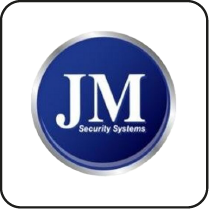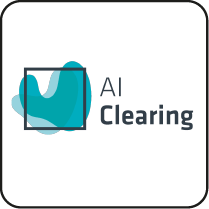What Is PCI DSS, Requirement 8?
When you’re navigating the complexities of PCI DSS compliance, understanding the core objectives of each requirement is crucial. Requirement 8 focuses on the identification and authentication of users accessing system components. Let’s delve into the specifics of this requirement and its significance.
The Primary Objective of PCI DSS Requirement 8
The primary goal of PCI DSS Requirement 8 is to ensure that each individual who accesses system components can be uniquely identified and authenticated. This is pivotal for maintaining the integrity and security of cardholder data. By enforcing unique identifiers and robust authentication mechanisms, Requirement 8 helps to prevent unauthorised access and potential data breaches.
Impact on Cardholder Data Security
Requirement 8 is a cornerstone of cardholder data security. By mandating unique user identification and stringent authentication processes, it significantly reduces the risk of fraudulent activities. This requirement ensures that only authorised personnel can access sensitive data, thereby safeguarding the cardholder information from malicious actors.
Defining User Identification and Authentication
Under PCI DSS Requirement 8, user identification is clearly defined to mean that each user must have a unique identifier (such as a username) that can be traced back to them. Authentication, on the other hand, refers to the process of verifying the identity of a user, typically through something they know (password), something they have (security token), or something they are (biometric data).
Integration with Other PCI DSS Requirements
Requirement 8 does not stand alone; it integrates seamlessly with other PCI DSS requirements to create a comprehensive security framework. For instance, it complements Requirement 7, which focuses on restricting access to cardholder data by roles. Together, they form a robust defence against unauthorised data access and manipulation.
At ISMS.online, we understand the importance of meeting these stringent standards. Our platform is designed to help you manage compliance effectively, ensuring that your organisation's security measures are up to the task of protecting sensitive cardholder data.
Book a demoThe Importance of Unique User Identifiers
In the framework of PCI DSS compliance, unique user identifiers are not just a recommendation; they are a mandate. These identifiers serve as the cornerstone for individual accountability within an organisation’s system. By assigning a distinct identifier to each user, you create a traceable link between actions and individuals, which is essential for both security and auditability.
Ensuring Accountability and Traceability
Unique identifiers are critical because they prevent the sharing of credentials, which can blur the lines of responsibility and make it difficult to trace actions back to a single source. In the event of a security breach, being able to pinpoint the exact user involved is invaluable for both remediation and legal accountability.
Consequences of Non-Compliance
Failing to use unique identifiers can lead to serious consequences. Not only does it increase the risk of unauthorised access, but it also complicates compliance audits, potentially resulting in fines or other penalties for non-compliance with PCI DSS standards.
Best Practices for Implementation
To ensure unique identifiers are properly implemented, organisations should:
- Establish a policy that mandates unique identifiers for all users.
- Integrate the user identification process with HR systems to automate account creation and closure.
- Regularly audit user accounts to ensure compliance with the unique identifier policy.
At ISMS.online, we understand the importance of these identifiers and provide the tools and guidance necessary to implement them effectively within your organisation.

ISO 27001 made easy
An 81% Headstart from day one
We’ve done the hard work for you, giving you an 81% Headstart from the moment you log on. All you have to do is fill in the blanks.

Understanding Authentication Factors in PCI DSS
PCI DSS Requirement 8 emphasises the critical role of authentication factors in securing access to system components. As you navigate the complexities of compliance, understanding and implementing these factors is paramount.
Types of Authentication Factors
PCI DSS recognises three types of authentication factors:
- Knowledge Factors: Something the user knows, like a password or PIN.
- Possession Factors: Something the user has, such as a token or smart card.
- Inherence Factors: Something the user is, identified through biometrics.
Implementing Authentication Factors
To implement these factors effectively, organisations should:
- Develop a comprehensive authentication policy that includes all three factors.
- Use technology solutions that support multi-factor authentication (MFA).
- Train staff on the importance of each factor and how to use them securely.
The Role of Multi-Factor Authentication
MFA plays a crucial role in enhancing security by requiring users to provide two or more verification factors to gain access to a system, making unauthorised access significantly more challenging.
Managing the User Access Lifecycle
Proper lifecycle management of user access is a critical component of PCI DSS Requirement 8. It ensures that access rights to system components are granted appropriately and revoked when no longer needed.
Adhering to Compliance Through Lifecycle Changes
When managing changes in user status, it’s essential to:
- Monitor and Review: Regularly review user access rights to ensure they align with current roles and responsibilities.
- Update Promptly: Make immediate changes to access rights following any alteration in user status, such as employment termination or role change.
Best Practices for Account Deactivation
For deactivating or deleting user accounts, best practices include:
- Timely Action: Disable accounts immediately upon user termination or role change.
- Document Procedures: Maintain clear procedures for deactivation and ensure they are followed consistently.
Contribution to Security Posture
Effective lifecycle management enhances your security posture by:
- Minimising Risks: Reducing the risk of unauthorised access by ensuring only current, authorised users have access.
- Supporting Compliance: Helping to maintain compliance with PCI DSS requirements and avoiding potential non-compliance penalties.
At ISMS.online, we provide the tools and guidance necessary to manage user access lifecycle efficiently, ensuring that your organisation’s access rights are always in compliance with PCI DSS Requirement 8.

Free yourself from a mountain of spreadsheets
Embed, expand and scale your compliance, without the mess. IO gives you the resilience and confidence to grow securely.

PCI DSS Password Protocols
Under PCI DSS Requirement 8, password protocols are a critical defence against unauthorised access to system components. These protocols are designed to ensure that passwords are robust, secure, and resistant to common attack vectors.
PCI DSS Password Requirements
PCI DSS sets forth stringent password requirements:
- Complexity: Passwords must be a minimum of seven characters and include a mix of numeric and alphabetic characters.
- Rotation: Passwords should be changed at least every 90 days.
- History: Passwords must not match the four previously used passwords.
- Security: Upon first use, passwords must be changed immediately.
Contribution to System Security
By adhering to these protocols, you’re not only complying with PCI DSS standards but also significantly enhancing your system’s security. Strong password protocols are a first line of defence in protecting sensitive cardholder data.
Addressing Challenges in Password Management
Maintaining strong password protocols can be challenging due to:
- User Convenience: Balancing security with user convenience to ensure compliance.
- Policy Enforcement: Ensuring all users adhere to password policies.
Leveraging ISMS.online for Effective Password Management
At ISMS.online, we provide a platform that simplifies the management of password protocols. Our tools help you:
- Automate Reminders: Set up automatic reminders for password changes.
- Monitor Compliance: Easily monitor and enforce compliance with password policies.
- Educate Users: Provide resources to educate your team on the importance of strong passwords.
By utilising our services, you can ensure that your password protocols are not only compliant but also contribute to a robust security posture.
Management of Administrative and Vendor Accounts
The management of administrative and vendor accounts is a critical aspect of PCI DSS Requirement 8. These accounts often have elevated privileges, making them prime targets for malicious actors. Effective control of these accounts is essential to maintain the integrity of the Cardholder Data Environment (CDE).
Implementing Specific Controls
For administrative and vendor accounts, PCI DSS Requirement 8 mandates:
- Unique Authentication: Each account must have a unique ID for traceability.
- Strong Authentication: Implementing multi-factor authentication (MFA) to verify the user’s identity.
- Password Management: Enforcing regular password changes and complexity requirements.
Impact on the Cardholder Data Environment
Proper management of these accounts directly affects the security of the CDE by:
- Limiting Access: Ensuring only authorised individuals can access sensitive data.
- Monitoring Activity: Tracking actions taken by these accounts to detect and respond to any irregularities.
Tools Provided by ISMS.online
At ISMS.online, we offer a suite of tools designed to assist in managing these critical accounts:
- Access Control: Our platform enables you to define and enforce access policies.
- Audit Trails: We provide comprehensive logging to monitor account activity.
By leveraging our services, you can ensure that your administrative and vendor accounts are managed in compliance with PCI DSS Requirement 8, safeguarding your CDE against potential threats.

Manage all your compliance, all in one place
ISMS.online supports over 100 standards and regulations, giving you a single platform for all your compliance needs.

Access Control Sub-Requirements
PCI DSS Requirement 8 is not just about identifying users and authenticating access; it also encompasses a set of sub-requirements designed to establish a comprehensive access control system. These sub-requirements are the building blocks for a secure environment, ensuring that access to system components is regulated and monitored.
Ensuring Comprehensive Security Measures
The sub-requirements under PCI DSS Requirement 8 include:
- Unique Identifiers: Assigning a unique ID to each person with computer access to prevent the use of shared logins.
- Authentication Management: Implementing procedures for adding, deleting, and modifying user IDs, credentials, and other identifier objects.
- Password Protocols: Enforcing strong password creation and change policies.
These measures collectively ensure that only authorised individuals can access sensitive data, thereby maintaining the integrity of the cardholder data environment (CDE).
Addressing Common Compliance Challenges
Organisations often face challenges such as:
- Policy Enforcement: Ensuring all employees adhere to access control policies.
- User Compliance: Training users to understand and follow security protocols.
Utilising ISMS.online for Streamlined Compliance
At ISMS.online, we provide a platform that simplifies the management of these sub-requirements. Our services help you:
- Automate Compliance Tasks: Streamlining the enforcement of access control policies.
- Educate Your Team: Offering training modules to increase user compliance with security measures.
By partnering with us, you can address the challenges of meeting PCI DSS Requirement 8 and maintain a secure and compliant environment.
Further Reading
Preparing for PCI DSS v4.0: Requirement 8
As the Payment Card Industry Data Security Standard (PCI DSS) evolves, so do the requirements for securing cardholder data. With the introduction of PCI DSS v4.0, there are new elements related to Requirement 8 that you need to be aware of.
Understanding the New Elements
PCI DSS v4.0 brings enhancements to Requirement 8 that focus on:
- Stronger Authentication: Emphasising the use of multi-factor authentication (MFA) and stronger password requirements.
- Advanced Monitoring: Introducing more rigorous measures for tracking and monitoring user access to the Cardholder Data Environment (CDE).
Steps for Transitioning to v4.0
To prepare for the transition, organisations should:
- Review Changes: Familiarise yourself with the updated requirements and assess how they impact your current security measures.
- Plan Upgrades: Develop a plan to upgrade your systems and processes to meet the new standards.
- Train Staff: Ensure that your team is trained on the new requirements and understands the importance of compliance.
Timelines and Milestones
The transition to PCI DSS v4.0 has set timelines:
- March 2022: PCI DSS v4.0 was released.
- By 2024: Organisations are expected to fully transition to v4.0.
Support from ISMS.online
At ISMS.online, we are committed to supporting you through this transition. Our platform offers:
- Guidance: Clear explanations of the new requirements and how to implement them.
- Tools: Features to help manage user identities and authentication processes.
- Expertise: Access to our team of compliance experts for personalised support.
By partnering with us, you can ensure a smooth transition to PCI DSS v4.0 and maintain the security and compliance of your payment systems.
Documenting Authentication Policies for PCI DSS Compliance
Documentation plays a pivotal role in meeting PCI DSS Requirement 8. It serves as a formal record that outlines your organisation’s approach to user identification and authentication, ensuring that all procedures are transparent and verifiable.
Essential Elements of Authentication Policy Documentation
Your authentication policy documentation should include:
- User Identification Procedures: Clearly defined methods for assigning unique identifiers to users.
- Authentication Protocols: Detailed processes for implementing and managing authentication factors, including MFA.
- Password Management: Guidelines for password creation, protection, and change management.
- Access Control Measures: Procedures for granting, modifying, and revoking access to system components.
Impact of Effective Policy Communication
Effective communication of these policies is crucial for:
- Ensuring Understanding: All relevant personnel must be aware of and understand the authentication policies.
- Promoting Compliance: Clear communication helps to ensure that policies are followed, thereby supporting compliance efforts.
The Role of ISMS.online in Policy Management
At ISMS.online, we provide a platform that aids in both documenting and communicating your authentication policies. Our services enable you to:
- Centralise Documentation: Keep all policy documents in one accessible, secure location.
- Streamline Updates: Easily update policies as needed and ensure that changes are communicated promptly.
- Enhance Engagement: Use our platform to engage with your team, ensuring they understand and adhere to the policies.
By utilising ISMS.online, you can maintain precise, understandable, and trustworthy documentation that supports your compliance with PCI DSS Requirement 8.
Technical Solutions for PCI DSS Requirement 8 Compliance
Navigating the complexities of PCI DSS Requirement 8 can be streamlined with the right technical solutions. These solutions are designed to assist organisations in establishing and maintaining robust user identification and authentication mechanisms.
Simplifying Compliance with Technical Tools
Technical solutions like multi-factor authentication (MFA) systems and identity management platforms play a crucial role in simplifying the compliance process. They provide:
- Automated User Management: Tools that automate the lifecycle management of user identities, from creation to deletion.
- Integrated Authentication Systems: Systems that seamlessly integrate various authentication factors, ensuring a secure and user-friendly experience.
Selecting the Right Authentication Solutions
When choosing technical solutions for authentication, consider:
- Compatibility: Ensure the solution integrates well with your existing systems.
- Scalability: Choose solutions that can grow with your organisation.
- User Experience: Select tools that are easy for your staff to use, encouraging compliance.
Evaluating Solution Effectiveness
To evaluate the effectiveness of these solutions, organisations should:
- Conduct Audits: Regularly audit the use of authentication tools to ensure they are functioning as intended.
- Gather Feedback: Obtain user feedback to identify any issues or areas for improvement.
At ISMS.online, we offer guidance and support in selecting and implementing these technical solutions, ensuring that you’re well-equipped to meet the stringent requirements of PCI DSS Requirement 8.
Aligning PCI DSS Requirement 8 with ISO 27001:2022
Navigating the intricacies of PCI DSS Requirement 8 becomes more manageable when aligned with the ISO 27001:2022 framework. This alignment ensures that the processes and mechanisms for identifying users and authenticating access are not only defined but also understood within the broader context of organisational roles, responsibilities, and authorities.
Mapping PCI DSS to ISO 27001 Controls
The mapping between PCI DSS Requirement 8 and ISO 27001:2022 controls is as follows:
- Requirement 8.1 and ISO 27001 A.5.16 & 5.3: Establishing identity management processes that are integrated with organisational roles and responsibilities.
- Requirement 8.2 and ISO 27001 A.5.16 & 5.3: Ensuring strict management of user identification and related accounts throughout their lifecycle.
- Requirement 8.3 and ISO 27001 A.8.5 & A.5.1: Implementing and managing strong authentication measures in line with information security policies.
Strengthening Authentication with MFA
For multi-factor authentication (MFA), the mapping is particularly crucial:
- Requirement 8.4 and ISO 27001 A.8.5: MFA is a necessity for securing access to the Cardholder Data Environment (CDE).
- Requirement 8.5 and ISO 27001 A.8.5: Proper configuration of MFA systems is essential to prevent misuse and ensure the integrity of authentication processes.
Managing Privileged Access
Lastly, the management of privileged access is addressed by:
- Requirement 8.6 and ISO 27001 8.2: The use of application and system accounts, along with their associated authentication factors, must be strictly managed to maintain a secure environment.
At ISMS.online, we provide the expertise and tools to help you align these requirements, ensuring a cohesive approach to user identification and authentication that meets both PCI DSS and ISO 27001 standards.
ISMS.online Supports PCI DSS Requirement 8
At ISMS.online, we understand that navigating PCI DSS Requirement 8 can be complex. That’s why we offer tailored support to help you identify users and authenticate access to system components effectively.
Expert Resources at Your Disposal
Our platform provides a wealth of resources to assist with user identification and authentication challenges:
- Guided Compliance: Step-by-step guidance through the compliance process.
- Best Practice Templates: Ready-to-use templates that align with PCI DSS standards.
- Knowledge Base: Access to a comprehensive library of articles and resources.
Enhancing Your Compliance Journey
Partnering with ISMS.online can significantly enhance your organisation’s compliance journey by:
- Streamlining Processes: Simplifying the implementation of compliance measures.
- Reducing Complexity: Making complex requirements more manageable.
- Ensuring Accuracy: Helping to maintain the precision and integrity of your compliance efforts.
Connecting with ISMS.online
Get in touch with us for comprehensive compliance solutions.
We're here to support you every step of the way, ensuring that your approach to PCI DSS Requirement 8 is not only compliant but also efficient and effective.
Book a demo








